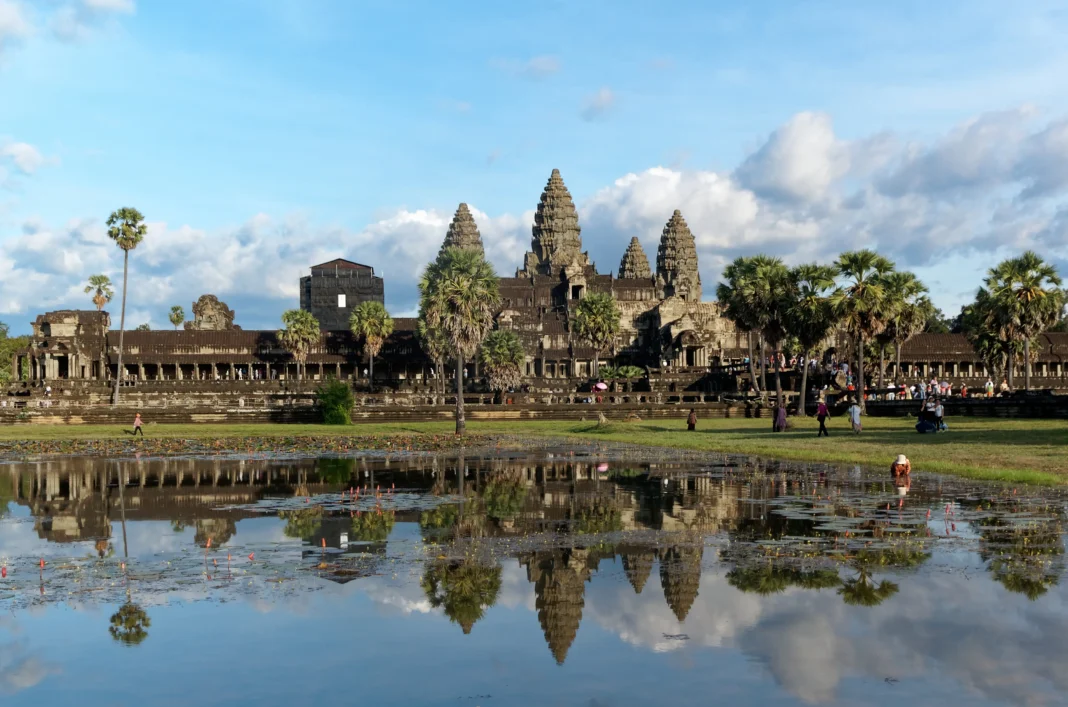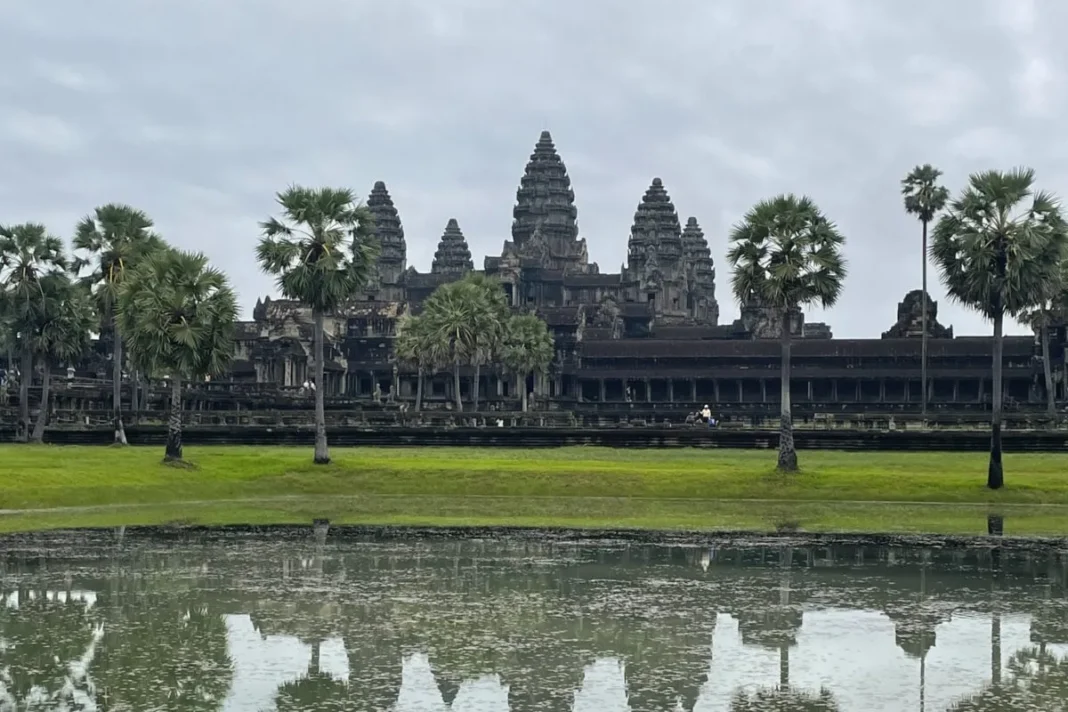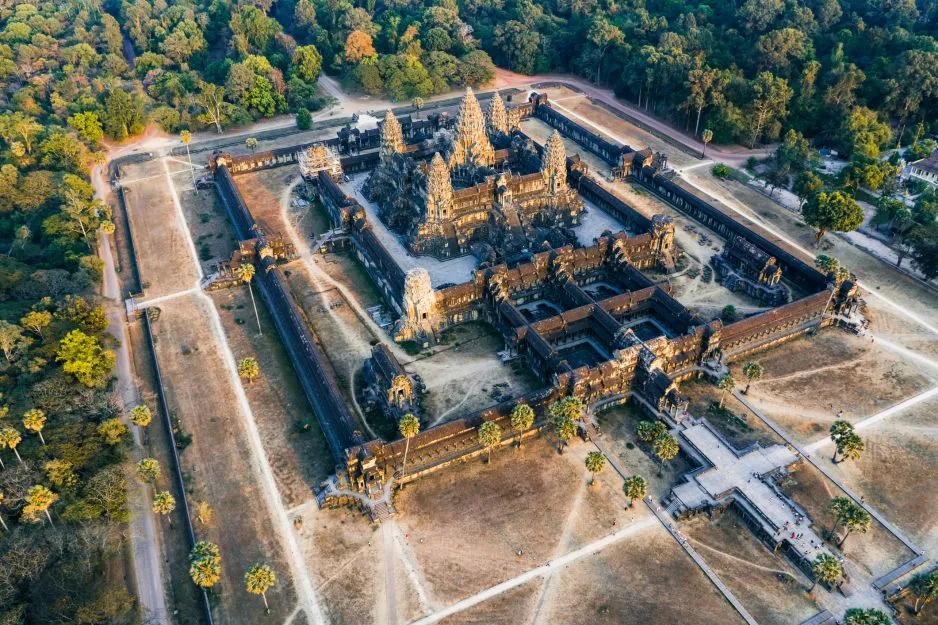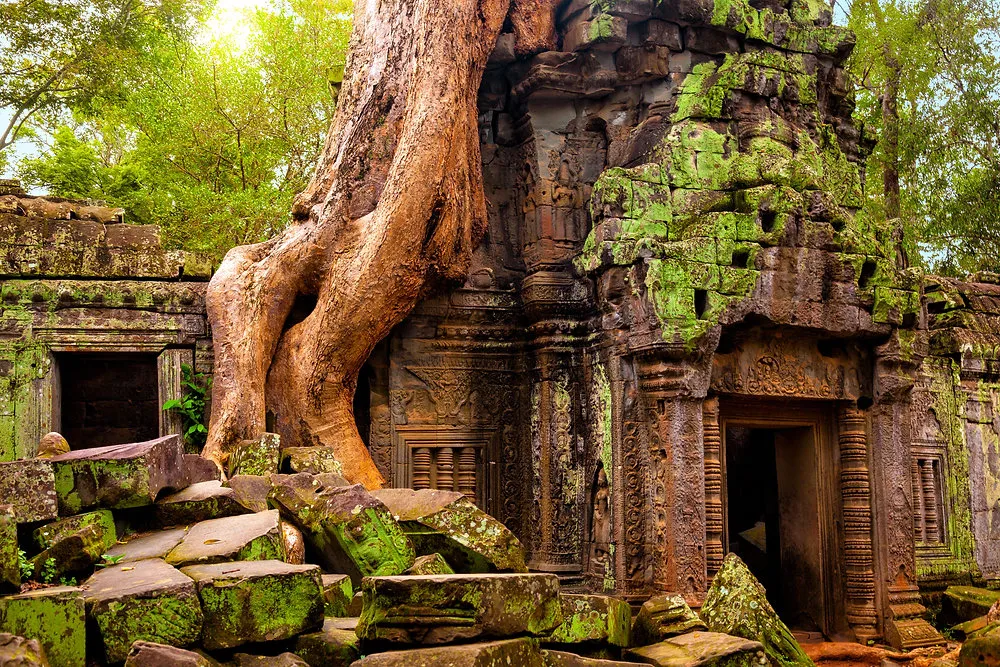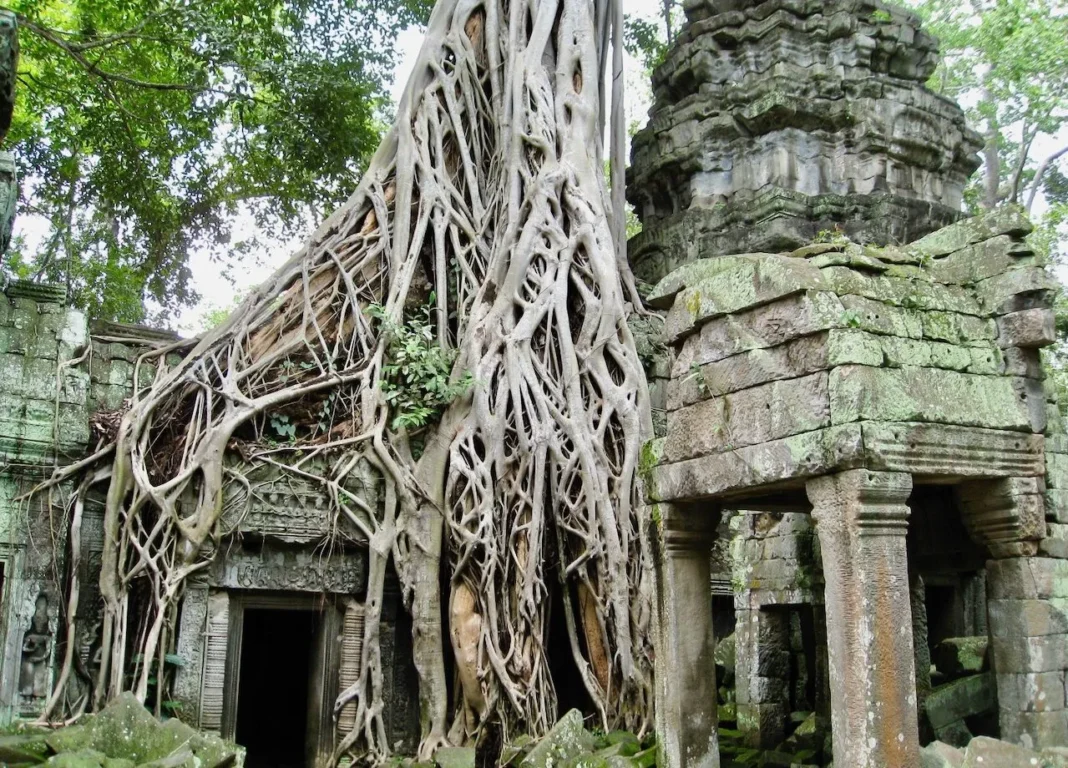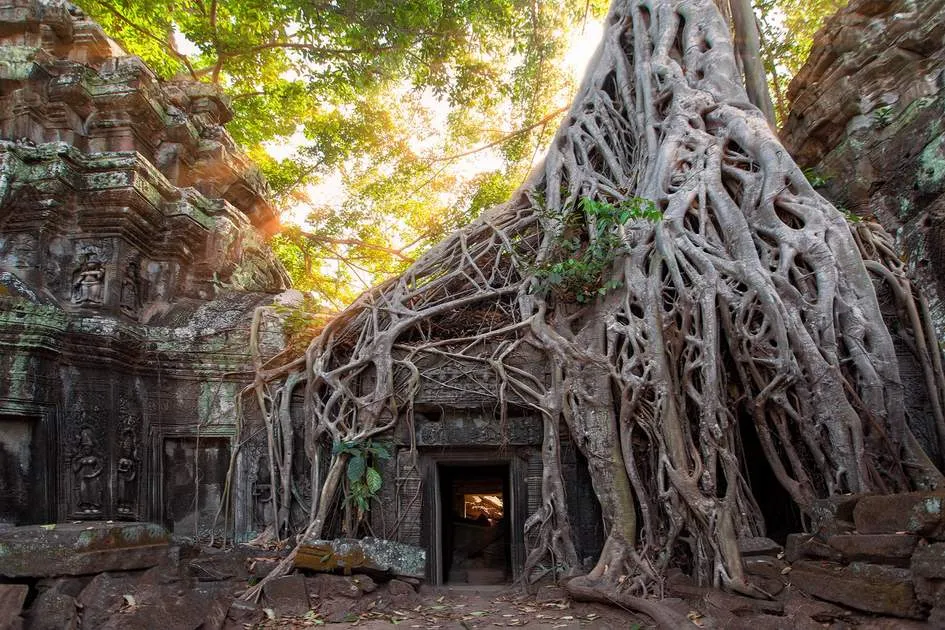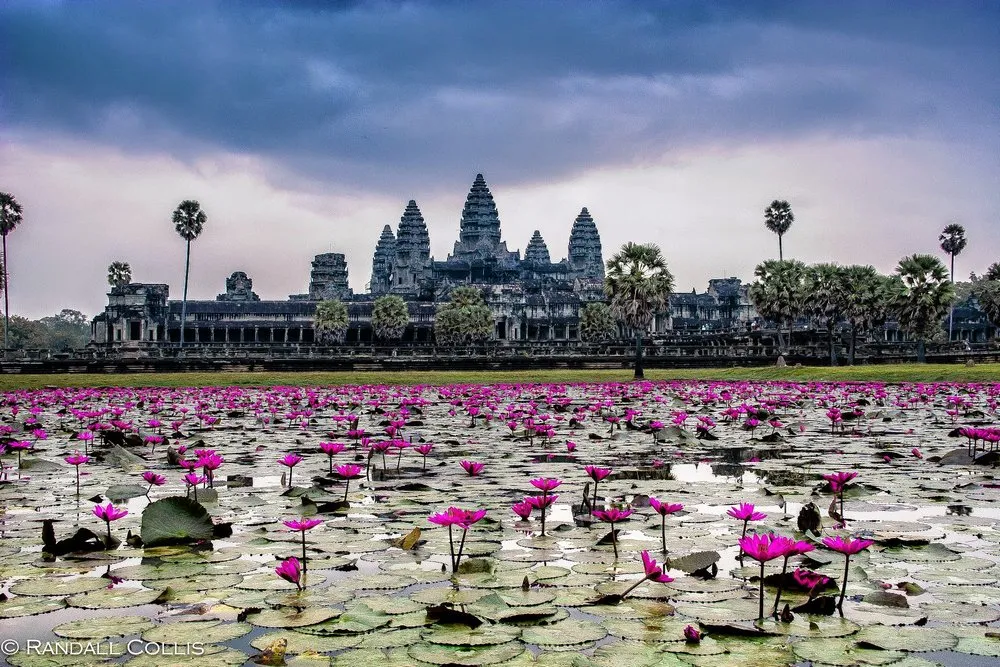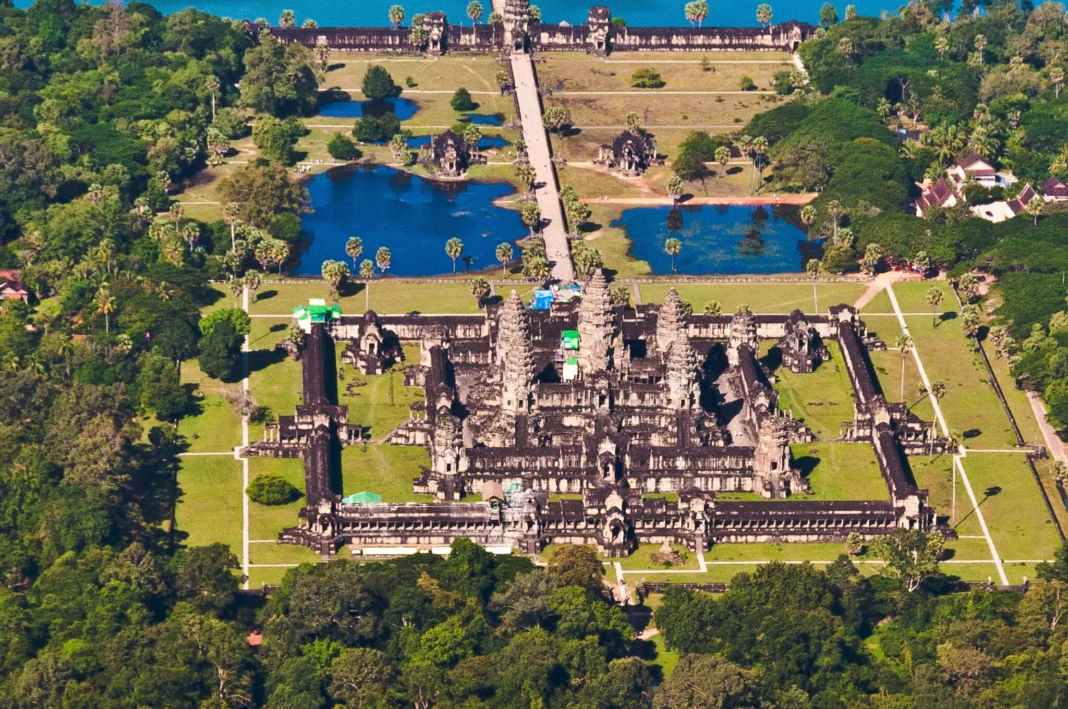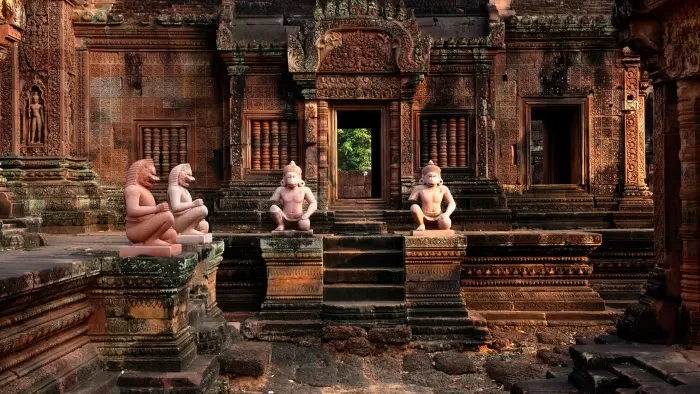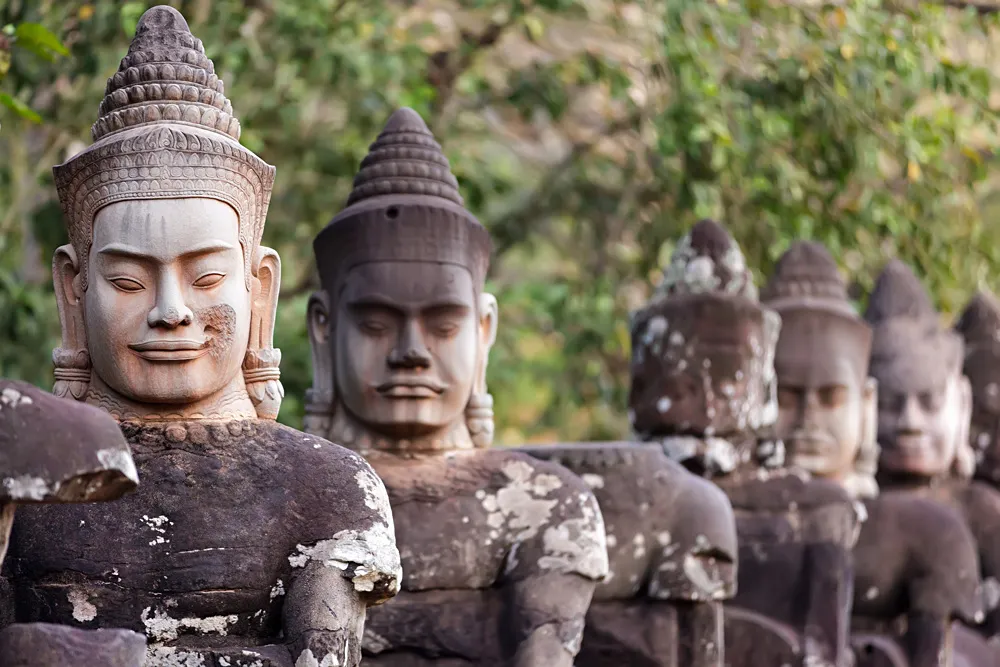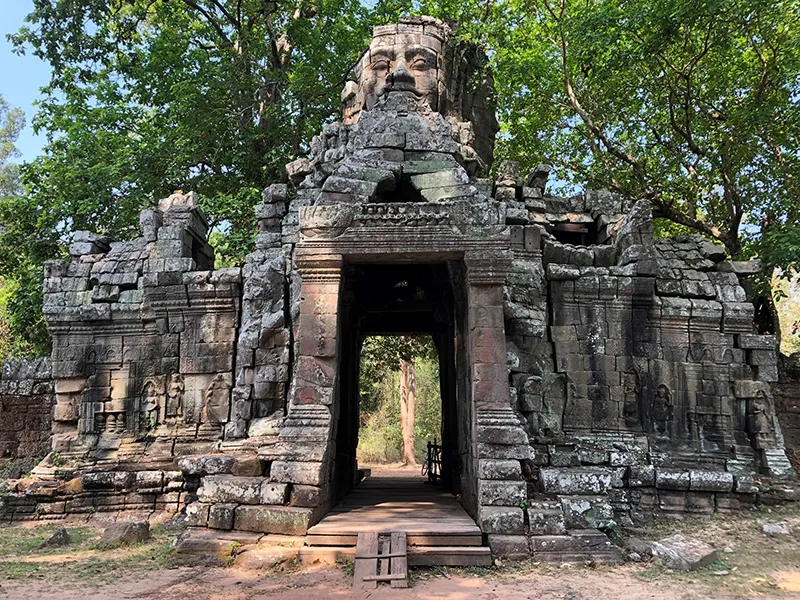Angkor Wat, Cambodia’s crown jewel, stands as a testament to the Khmer Empire’s architectural and artistic brilliance. This sprawling temple complex, the largest religious monument in the world, draws visitors from across the globe to marvel at its grandeur and intricate details.
Located in Siem Reap, Cambodia, this iconic landmark is not only a UNESCO World Heritage Site but also a symbol of national pride and a source of endless fascination for historians, archaeologists, and travelers alike. Let’s embark on a journey to explore the history, architecture, and cultural significance of this magnificent temple.
Unveiling the History of Angkor Wat
Angkor Wat’s history is intertwined with the rise and fall of the Khmer Empire. Built in the first half of the 12th century by King Suryavarman II, it was originally dedicated to the Hindu god Vishnu. The temple’s construction, believed to have taken over 30 years, involved thousands of laborers and artisans who meticulously carved its bas-reliefs and sculpted its statues.
It served as both a religious center and a political hub, reflecting the Khmer Empire’s power and prosperity. However, with the decline of the empire in the 15th century, the temple was gradually abandoned and reclaimed by the jungle. It wasn’t until the 19th century that French explorers rediscovered it, sparking a renewed interest in its history and preservation.
Architectural Marvels of Angkor Wat
Angkor Wat’s architecture is a stunning blend of Hindu and Khmer styles. The temple complex is designed to represent Mount Meru, the mythical home of the gods in Hindu and Buddhist cosmology. Its central towers symbolize the mountain’s five peaks, while the moat surrounding the complex represents the cosmic ocean.
The temple’s layout follows a symmetrical plan, with a series of concentric galleries and courtyards leading to the central sanctuary. The walls of the galleries are adorned with intricate bas-reliefs depicting scenes from Hindu mythology, historical events, and everyday life in the Khmer Empire. These carvings, executed with remarkable skill and detail, offer a glimpse into the beliefs, values, and artistic achievements of the Khmer people.
Must-See Features of Angkor Wat
- The Central Sanctuary: This is the heart of the complex, where the main shrine dedicated to Vishnu once stood. The sanctuary is reached by a series of steep staircases, symbolizing the ascent to Mount Meru.
- The Bas-reliefs: These intricate carvings, covering the walls of the galleries, depict scenes from Hindu mythology, including the churning of the ocean of milk and the battle between the gods and the demons.
- The Libraries: These two symmetrical buildings, located on either side of the causeway leading to the central sanctuary, were once used to store sacred texts and manuscripts.
- The Outer Gallery: This is the largest gallery in the temple complex, encircling the central sanctuary and the inner galleries. It features a series of bas-reliefs depicting historical events and scenes from everyday life in the Khmer Empire.
- The Moat: This wide moat surrounds the entire temple complex, symbolizing the cosmic ocean. It also served as a practical defense mechanism.
Planning Your Visit to Angkor Wat
- Best time to visit: The dry season, from November to April, is the most popular time to visit, as the weather is pleasant and the crowds are smaller. However, the temple is stunning year-round, and each season offers a unique experience.
- Angkor Pass: To visit Angkor Wat and other temples in the Angkor Archaeological Park, you’ll need to purchase an Angkor Pass. There are different pass options available, ranging from one-day to seven-day passes.
- Getting there: It is located about 6 kilometers north of Siem Reap. You can reach the temple by tuk-tuk, taxi, or bicycle.
- What to wear: Dress respectfully. Shoulders and knees should be covered. Avoid wearing revealing clothing or anything that might be considered offensive.
- Footwear: Wear comfortable shoes, as you’ll be doing a lot of walking. Avoid wearing flip-flops or sandals, as they might not provide enough support on the uneven terrain.
- Sun protection: The sun can be intense in Cambodia, so be sure to wear sunscreen, a hat, and sunglasses.
- Water: Stay hydrated by carrying a reusable water bottle and refilling it at designated stations.
- Respect the site: Avoid touching the carvings or climbing on the structures. Be mindful of other visitors and avoid making loud noises.
Beyond Angkor Wat: Exploring the Angkor Archaeological Park
While Angkor Wat is undoubtedly the most famous temple in the Angkor Archaeological Park, there are many other fascinating sites to explore. Here are a few highlights:
- Angkor Thom: This ancient city, the last capital of the Khmer Empire, is home to the Bayon temple, the Terrace of the Elephants, and the Terrace of the Leper King.
- Ta Prohm: This atmospheric temple, overgrown with trees and roots, was made famous by the movie “Tomb Raider.”
- Banteay Srei: This smaller temple, known for its exquisite pink sandstone carvings, is often referred to as the “Jewel of Khmer Art.”
- Preah Khan: This sprawling complex, once a Buddhist university and monastery, features intricate corridors, hidden chambers, and a central sanctuary.
Tips for Exploring the Temples
- Start early: To avoid the crowds and the heat, it’s best to start your temple exploration early in the morning.
- Hire a guide: A knowledgeable guide can provide valuable insights into the history and culture of the temples.
- Pace yourself: There’s a lot to see in the Angkor Archaeological Park, so don’t try to do too much in one day.
- Take breaks: The heat and humidity can be tiring, so be sure to take breaks throughout the day.
- Bring a camera: You’ll want to capture the beauty of the temples, so don’t forget your camera.
- Be prepared for the weather: The weather in Cambodia can be unpredictable, so be prepared for both rain and sunshine.
The Cultural Significance
Angkor Wat is not only an architectural masterpiece but also a symbol of Cambodia’s rich cultural heritage. The temple complex represents the Khmer Empire’s deep connection to Hinduism and Buddhism, as well as its artistic achievements and technological advancements.
Its bas-reliefs and sculptures offer a glimpse into the beliefs, values, and daily life of the Khmer people. They depict scenes from Hindu mythology, historical events, and everyday activities, providing a valuable window into the past.
Today, it is a source of national pride for Cambodians and a reminder of their ancestors’ glorious past. The temple complex is also a major tourist attraction, contributing significantly to the country’s economy.
Frequently Asked Questions
- What is the best time of day to visit?
- The best time to visit is early in the morning to avoid the crowds and the heat. Sunrise is a particularly popular and breathtaking sight.
- How much does it cost to visit?
- You’ll need to purchase an Angkor Pass to visit and other temples in the Angkor Archaeological Park. The cost of the pass varies depending on the duration.
- What should I wear when visiting?
- Dress respectfully. Shoulders and knees should be covered. Avoid wearing revealing clothing or anything that might be considered offensive.
- Can I hire a guide?
- Yes, you can hire a guide. A knowledgeable guide can provide valuable insights into the history and culture of the temples.
- Are there any restaurants or cafes nearby?
- Yes, there are a few restaurants and cafes located near the entrance. You can also find food vendors selling snacks and drinks throughout the complex.
Preserving for Future Generations
This is a fragile monument that requires constant care and attention to ensure its preservation. The Cambodian government, along with international organizations such as UNESCO, is working to protect the temple complex from the effects of weathering, erosion, and tourism.
Visitors can contribute to the preservation by following the rules and regulations, respecting the site, and supporting sustainable tourism practices.
A Journey of Discovery
A visit to Angkor Wat is more than just a sightseeing trip. It’s a journey of discovery, a chance to connect with the past and experience the grandeur of a lost civilization. As you wander through the temple’s corridors and courtyards, you’ll be transported back in time, imagining the lives of the kings, priests, and artisans who built and inhabited this magnificent complex.
A Photographer’s Paradise
This temple is a dream destination for photographers. The intricate architecture, stunning bas-reliefs, and serene surroundings offer endless opportunities for capturing breathtaking images. Whether you’re a professional photographer or simply enjoy taking pictures, you’ll find plenty of inspiration here.
Here are some tips for capturing the perfect shot:
- Golden Hour: The best time to photograph is during the golden hour, shortly after sunrise or before sunset. The soft light at these times creates a magical atmosphere and enhances the temple’s details.
- Reflections: The moat surrounding offers beautiful reflections, especially during sunrise and sunset.
- Details: Don’t forget to capture the intricate details of the carvings and sculptures.
- People: Include people in your photos to add a sense of scale and life to the scene.
- Experiment: Try different angles and perspectives to capture unique and creative images.
A Spiritual Journey
For many visitors, a trip here is more than just a sightseeing experience. It’s also a spiritual journey, a chance to connect with the divine and reflect on the deeper meaning of life. The temple’s serene atmosphere, intricate symbolism, and connection to ancient beliefs and practices can evoke a sense of awe and wonder.
Whether you’re a devout Hindu or Buddhist, or simply someone seeking a moment of peace and contemplation, this place offers a space for spiritual reflection and connection.
A Symbol of Hope and Resilience
This iconic temple has witnessed centuries of history, from the rise and fall of the Khmer Empire to the ravages of war and the challenges of modern times. Yet, despite these trials, the temple complex stands as a symbol of hope and resilience, a testament to the enduring spirit of the Cambodian people.
Today, it is a beacon of peace and reconciliation, drawing visitors from all over the world to celebrate its beauty and cultural significance. It is a reminder that even in the face of adversity, humanity can create something truly extraordinary.
A Legacy for Generations to Come
This temple is more than just a collection of ancient stones. It’s a living legacy, a testament to the ingenuity and creativity of the Khmer people. It’s a place of wonder and inspiration, a reminder of our shared human history and the power of the human spirit.
As we continue to explore and appreciate this landmark, let us also commit to preserving this precious heritage for generations to come. Let us ensure that this iconic landmark continues to inspire and amaze people from all walks of life for centuries to come.
Angkor Wat: Your Unforgettable Adventure Awaits
Angkor Wat is a destination that should be on every traveler’s bucket list. Its awe-inspiring architecture, rich history, and spiritual significance make it a truly unique and unforgettable experience. Whether you’re exploring the temple complex, capturing its beauty on camera, or simply soaking up its serene atmosphere, it will leave a lasting impression on your heart and soul.
So, what are you waiting for? Start planning your adventure today and prepare to be amazed by the wonders of this ancient world.
Book tickets instantly on your phone, even last-minute! Get mobile tickets, skip the lines, and enjoy your vacation hassle-free. We partner directly with attractions worldwide, so you can find the best experiences, no matter where you go.


